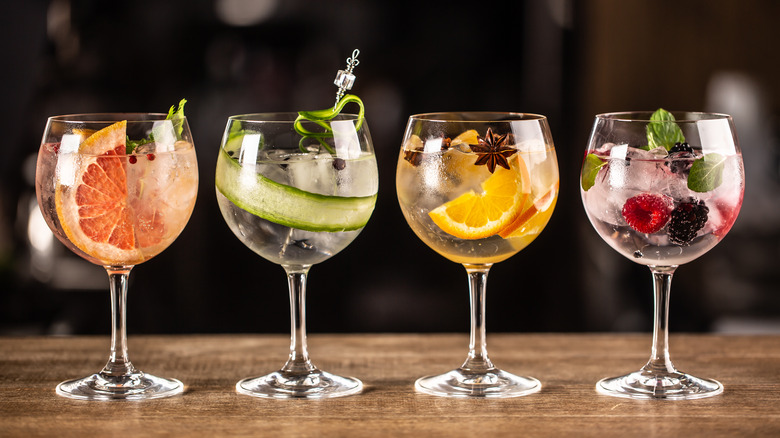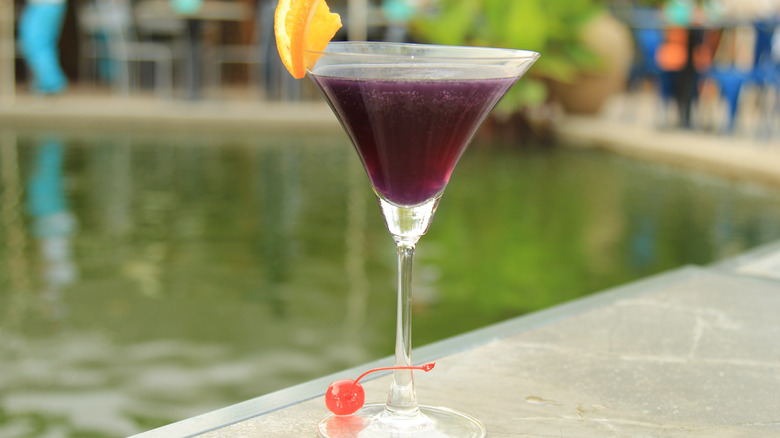Why You Should Think Twice About Eating That Drink Garnish
It's unclear when garnishes began to adorn cocktails, but there's a rumor a feather was the first to grace a drink — whether accidental or intentional, we're not sure (via The Cocktail Novice). The 1862 Bartender's Guide mentions citrus peel, but there isn't much detail about how the decoration was used or prepared (per Mental Floss).
Wine Enthusiast asserts garnishes should be functional and enhance the flavor, smell, or texture of a drink. Details make a big impression, says Moody Mixologist, and garnishes have the potential to elevate even basic concoctions. Bartenders Business maintains that modern-day cocktails are frequently posted on social media, so an extra sprig of rosemary or a tastefully-placed flower can turn a simple cocktail into a magnetic photo opp that garners thousands of views.
Garnishes can be made from just about anything, says Advanced Mixology; fruits encased in ice, flowers, herbs, umbrellas, straws, pickles, even cheese and playing cards have graced cocktail glasses. Garnishes like olives, maraschino cherries, limes, lemons, mint, and cucumber are labeled "must-haves" in a bartender's repertoire (per Sip Awards). Let's say you're feeling a bit peckish and your drink arrives with a tempting skewer of colorful, bright fruit. Should you eat it?
Appearances can be deceiving
Those cute drink decorations may have been sitting out for hours, warns Insider; plus, that delicate adornment is meant to enhance your experience with the drink — if you eat it, it's gone, along with whatever sense-enhancing impact it was supposed to deliver. But there's another reason you might want to place that garnish on the edge of your plate.
In an experiment conducted at 21 different bars, researchers swabbed lemon slices placed on glasses to test for "microbial contents." 76 lemons were sampled, and, we're sorry to say, nearly 70% of the slices showed microbial growth. In total, over 25 different microbial species were found. Yuck.
While some microbes are helpful — think of the yeast that makes dough rise – many can be harmful, warns Harvard University. Those oranges and lemons meant to decorate glasses may not be properly taken care of before they reach your table. We suggest consuming with caution the next time a drink arrives with added flair.

